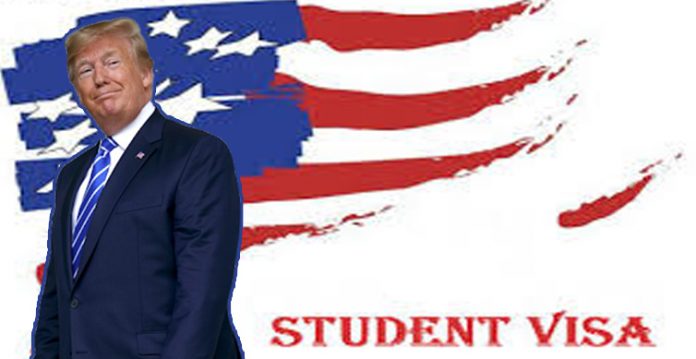Withdrawing its previous decision to strip international students of their visas if they don’t attend classes in-person, the Trump administration issued a statement through a federal judge in Boston on Tuesday, allowing students to take online classes without having to leave the US.
The earlier decision had received a lot of backlash from the universities of Harvard and MIT which took suo motu cognizance of the order moved by the US Immigration and Customs Enforcement (ICE) on July 6th. They filed a lawsuit, aiming to block the same calling it, “a cruel, abrupt and unlawful action to expel international students amidst the pandemic”, two days after it was announced. The Massachusetts attorney also vowed to support the MIT in this regard. “Massachusetts is home to thousands of international students who should not fear deportation or be forced to put their health and safety at risk in order to advance their education,” Maura Healey, the attorney general, said in a statement. “This decision from ICE is cruel, it’s illegal, and we will sue to stop it.”
Along with these two universities, a number of researchers and about 20 states criticized the policy that had plans to deport students who did not abide by it. In all, 19 companies and local unions, like the Chamber of Commerce of the United States of America, the Software Alliance, and the Information Technology Industry Council, had signed the brief in a case where Harvard University, the Massachusetts Institute of Technology and 180 other colleges have filed, opposing the ICE’s policy.
Minutes before the court was about to start the hearing, Boston federal judge, Allison D. Burroughs announced that the Trump administration has agreed to allow foreign students to stay in the US and attend their online classes, retrieving its policy to revoke the student visas.
The government’s rule to let students take atleast one class in-person compared to its previous decision that needed them to attend most of the classes that way was termed “lenient” by ICE.
However, this too would remain suspended after President Trump’s declaration of emergency on March 13th due to the coronavirus pandemic. The ICE run Student and Exchange Visitor Program had permitted students to continue with their spring and summer classes of 2020 online. Later on July 6th, they announced that international students wouldn’t be allowed in the country if they don’t get back to the universities for in-person classes amid the crisis.
The statement said that students who fail to do so could face “immigration consequences including, but not limited to, the initiation of removal proceedings”.
The rule applies to holders of F-1 and M-1 visas, which are for academic and vocational students. The State Department issued 388,839 F visas and 9,518 M visas in the fiscal year 2019, according to the agency’s data.
Kenneth T. Cuccinelli II, the acting deputy secretary of the Department of Homeland Security, in its interview to CNN said “If they’re not going to be a student or they’re going to be 100 percent online, then they don’t have a basis to be here. They should go home, and then they can return when the school opens.”
The overturn of the announcement was made before July 15th, which was the deadline for universities to declare the direction of their action for conducting the classes of September.
Indian students are now letting out a sigh of relief as the US was home for over 200,000 of them, becoming the second-largest student community.
According to a BBC report, over 1 million international students are enrolled in American universities every year, one fifth of who are Indians. These foreign students impart 41 billion dollars to the US’s economy.
Experts and universities said that Trump’s move to revoke student visas was done to put pressure on these educational institutions to reopen despite the tense situations. If the international students were forced to leave the country, universities would also face heavy financial losses as Indian students mostly pay full tuition fees and only a very few of them receive scholarships.


